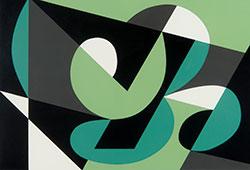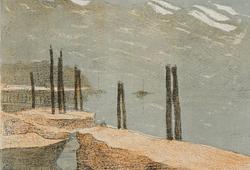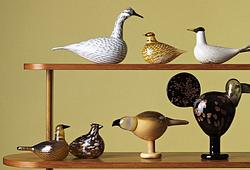Helsinki Winter Sale presents works by Tove Jansson
In recent years, Bukowskis has sold several works by Tove Jansson for world record prices and top results. Our ongoing online auction Helsinki Winter Sale's selection includes four works by Tove Jansson.
Helsinki Winter Sale November 16 – 27
Tove Jansson, "Seaweed burners", Estimate: 25 000 - 35 000 EUR
"Seaweed Burners" (1938) represents a period in Tove Jansson's career when she had already detached herself from her art studies at the Ateneum and was beginning to receive encouraging attention as a free artist. Her first exhibitions were already behind her and her own artistic expression was established.
In the spring of 1938, Jansson was able to use the money she had earned from her work as an illustrator and writer to go on a long-awaited study trip to Paris and Brittany. The atmosphere and artistic community in Paris meant a lot to Jansson, but an even more important step in her artistic development was the trip to Brittany, which she made alone after finishing her semester at the art school. The rugged nature and the way of life of the locals in the Breton coastal villages made an indelible impression on the young artist, and her Breton subjects came to be characterized by a stripped-down style of painting and fresh, clear colours. The seaweed reefs of Île de Sein, with the towering lighthouse in the background, were among the many Breton subjects Jansson continued to work on long after her return.
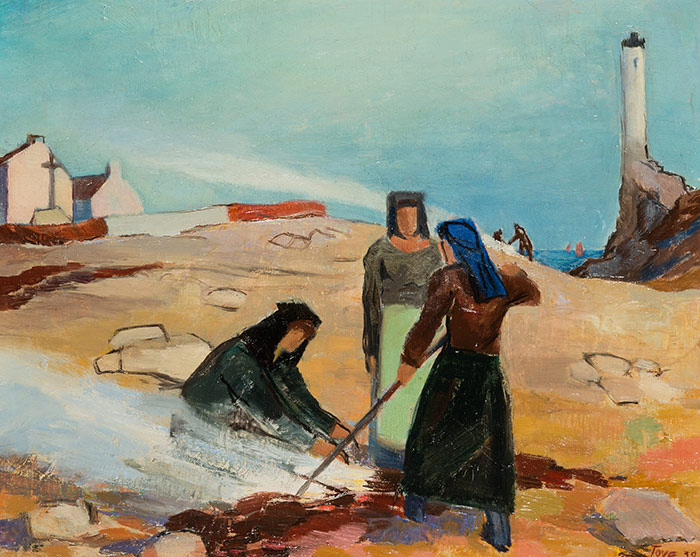
Tove Jansson, "The berry pickers", estimate: 25 000 - 35 000 EUR.
Tove Jansson spent her childhood summers in Pellinge in the Porvoo archipelago, which became the most beloved and significant place in her life. The natural beauty and life in the archipelago left its mark on both her literary and artistic output. In her book "The Sculptor's Daughter", Jansson describes the forest in Pellinge, which she thought resembled that in John Bauer's drawings. Jansson was a great admirer of John Bauer's art, particularly his depiction of forests in muted shades of grey and brown, which fascinated her.
Influences from Bauer is also reflected in the painting "The Berry Pickers" (1941), now for sale. The work was undoubtedly painted in the forests of Pellinge, which later served as the inspiration for the story "What Happened Next?". While Bauer used a small, pale-haired princess as an eye-catcher in his mysterious forest scenes, Jansson has placed three white-clad berry-pickers in a rocky archipelago forest, with the sea looming on the distant horizon. The work depicts both the rugged landscape and the archipelago life in Itä-Uusimaa that Jansson loved.
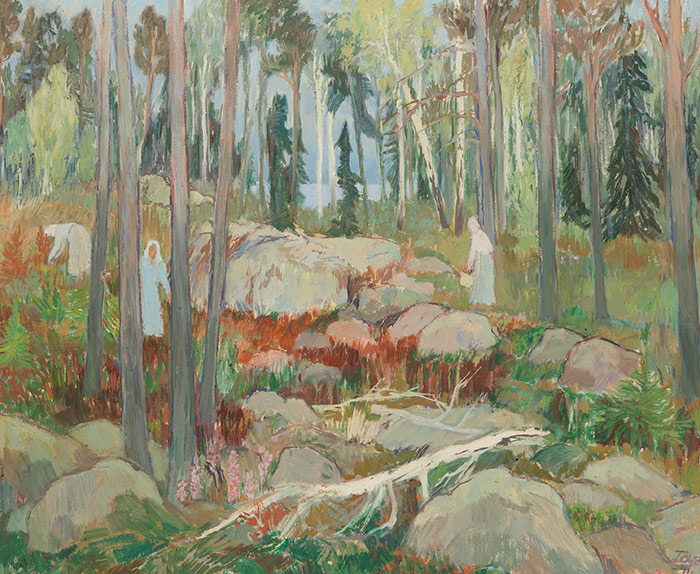
Tove Jansson, Still-life with a white vase, estimate: 25 000 - 35 000 EUR
"Nature morte with white vase" (1943) represents Jansson's lush and fresh wartime still-lifes, which she painted as a counterbalance to the anxiety and depression caused by the war. During the war years, access to artists' materials was limited, friends and acquaintances were sent to the front, and the general uncertainty created disarray. Despite this, Jansson was productive, and to quell the anxiety of war she turned to bright and joyful subjects in her art. The true storyteller's creative vein is clearly discernible in the objects and details found in the still-lifes she painted during this time. These motifs also appealed to the public and Jansson's work sold well. Tove Jansson's artistic breakthrough came specifically during the war years - she held her first solo exhibition in 1943.
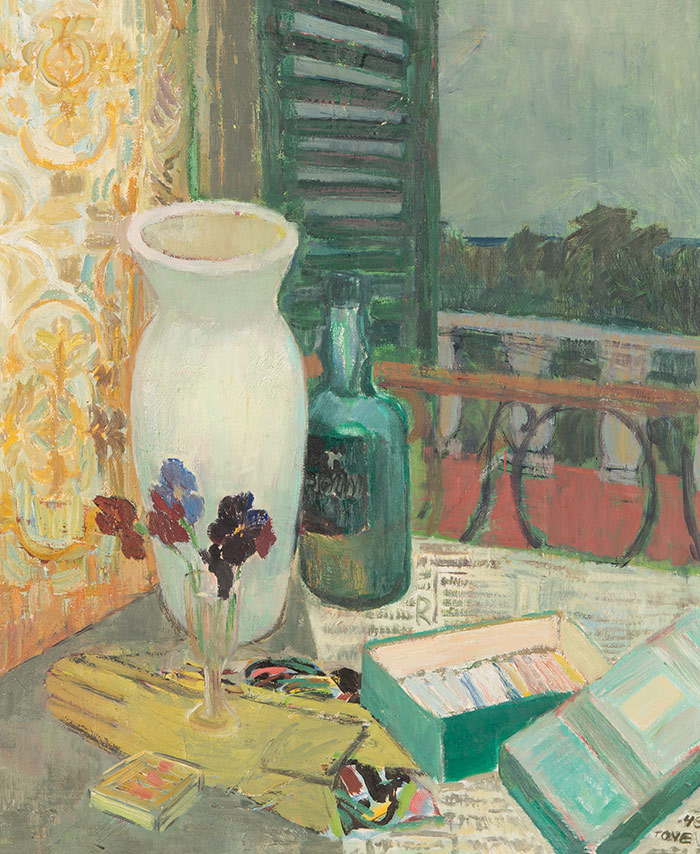
Tove Jansson, "Behind the scene", estimate: 20 000 - 30 000 EUR
The period after the end of the war was a lively and successful time in Jansson's artistic career. She had found her own artistic expression and there were no major changes in her painting for a long time. In the 1950s, abstract art began to make inroads into the Finnish art scene, and Jansson's art also took on a more stripped-down and abstract expression. The 1960s marked a new active period in the artist's career, when she had completed the Moomin series and could once again concentrate full-time on painting.
"Behind the Scene" (1962) was produced during this new creative period, when colour took on a more central role than the subject. Despite its abstract language, the work is based on a figurative and recognizable motif that Jansson discovered while working behind the scenes at the theatre. The theatre's set design and the various devices made a great impression on Jansson, and in the 1962 work they tower in front of the viewer like a high, rhythmic wall, at the same time limiting the view of the theatre hall itself.
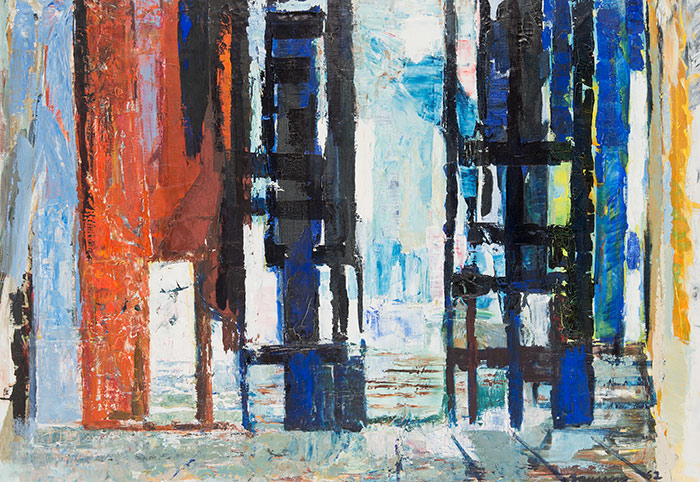
Requests & condition reports Contact specialist

Helsinki
Johan Wulff
Head Specialist art, prints and photography
+358 (0)50 410 1377




